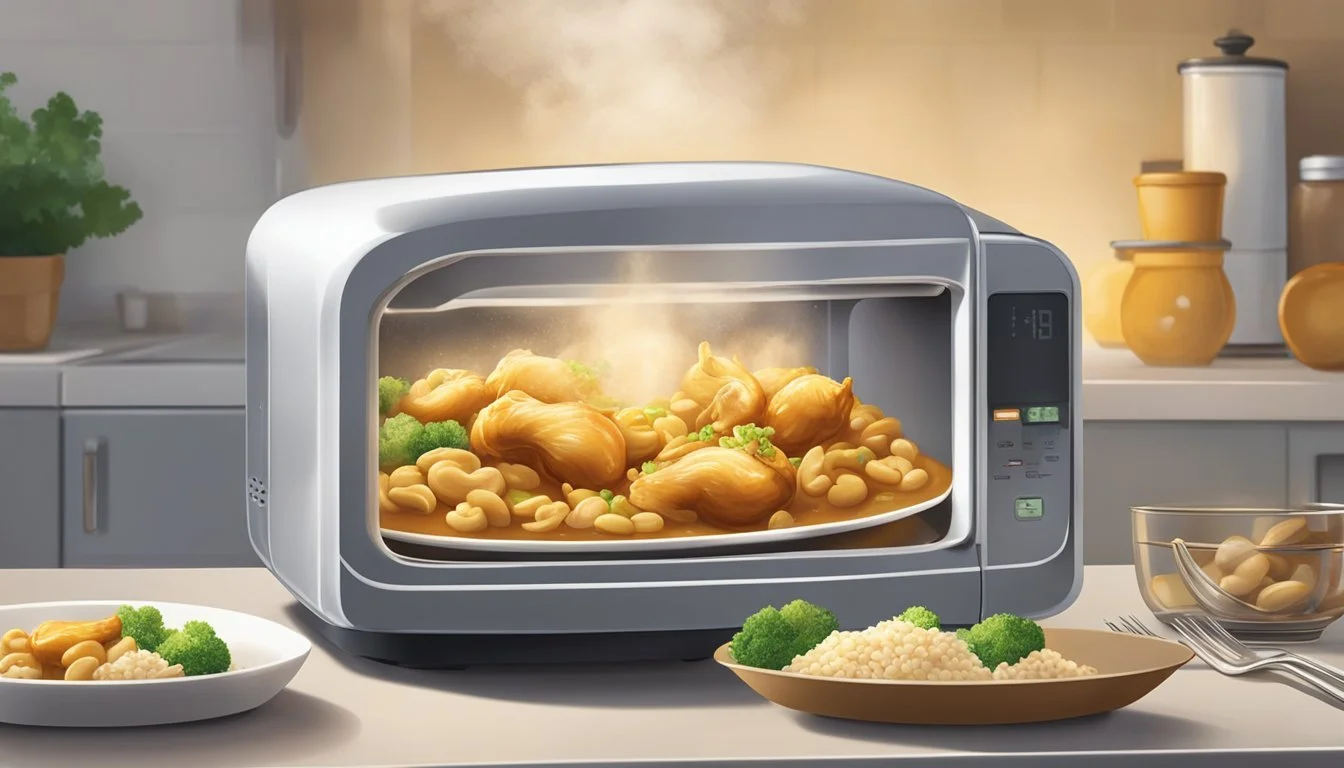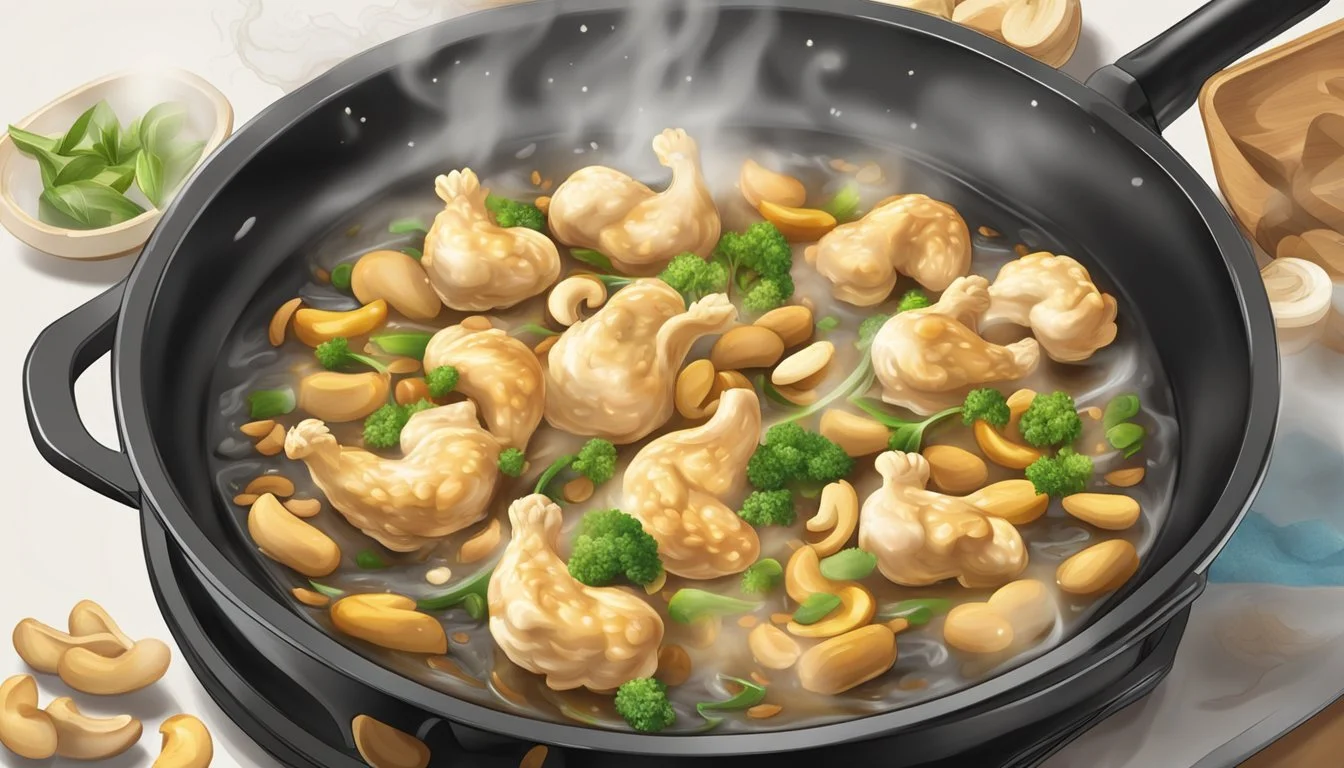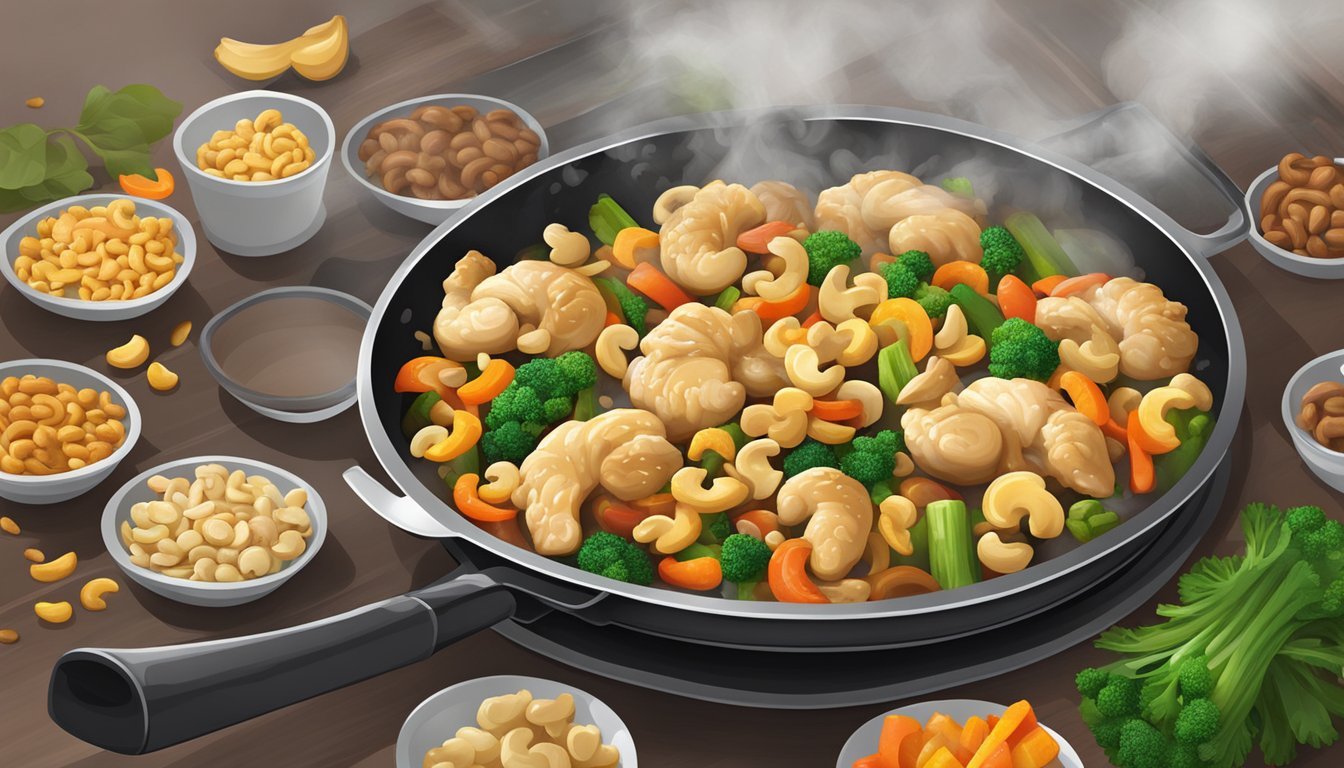Best Way to Reheat Cashew Chicken
Ensuring Optimal Crunch and Flavor Retention
Cashew chicken, with its blend of textures and savory flavors, is a takeaway favorite that doesn't always hold up well to next-day reheating. To ensure that the chicken retains its optimal texture and the nuts stay crunchy, specific reheating methods must be employed. The desired outcome is to preserve both the dish’s moisture and the unique combination of flavors that make cashew chicken such a beloved dish.
Proper reheating methods can mean the difference between a soggy, bland meal and one that's almost as fresh as when it was first cooked. The key lies in gentle heating that evenly warms the chicken without overcooking it or making it tough. For maintaining crunchiness, quick reheating at high temperatures in appliances like an air fryer can provide the texture reminiscent of the initial serving. Ensuring the chicken is flavorful requires not just the right reheating technique, but also consideration of factors like the addition of liquids or coverings to trap moisture.
When approaching the task of reheating cashew chicken, one must balance these factors with care. The chicken should reach a safe internal temperature, while the cashews and any crispy elements are to be shielded from becoming overly softened. Techniques will vary slightly depending on the tools available, from ovens to air fryers, each offering a different path to reviving the dish’s signature qualities.
Understanding Reheating Chicken
Reheating chicken, especially a delicacy like cashew chicken, requires maintaining its unique texture—crunchy on the outside and moist on the inside—while ensuring it is safe to eat.
Effects of Reheating on Texture and Moisture
When reheating chicken, one must take care not to compromise its texture. Chicken that was once tender and juicy can become dry, tough, and less enjoyable. Cashew chicken has a desirable crunchy texture from the nuts and a tender interior, which can be lost if not reheated properly.
Microwave: Quick and convenient, but can unevenly heat the chicken and often leads to a soft or soggy texture rather than preserving the crunchiness.
Oven: Suitable for even reheating and maintaining a crisp exterior. It's advisable to cover the chicken with aluminum foil to trap moisture and keep the inside moist.
Stovetop: Reheating in a skillet can preserve the crunchy texture while adding a small amount of water or broth can aid in maintaining moisture.
Food Safety Considerations
Ensuring the chicken is safe to eat after reheating is paramount. Two key elements to this are the heat source used and the internal temperature reached.
Thermometer Use: A thermometer should be used to check that the internal temperature of the chicken reaches at least 165°F (74°C) to kill bacteria and make the chicken safe to eat.
Refrigeration: Leftover chicken should be stored properly in the refrigerator to minimize the risk of bacterial growth.
Method Internal Temperature Texture Outcome Moisture Level Microwave At least 165°F Can become soggy May dry out Oven At least 165°F Preserves crunch Stays moist Stovetop At least 165°F Maintains texture Can stay moist
Properly reheated chicken not only offers a delightful dining experience but also adheres to food safety guidelines necessary for health.
Preparation Steps Before Reheating
Proper preparation of cashew chicken before reheating is crucial to ensure that the crunchiness and flavors are retained. Adhering to these steps will set the foundation for the best reheating results.
Bringing Chicken to Room Temperature
The first step involves bringing the leftovers to room temperature. This is important because it allows for even reheating and helps to prevent the chicken from becoming tough. The cashew chicken should be removed from the fridge and left out for about 15-20 minutes before applying heat.
Selecting the Right Equipment
Choice of equipment matters significantly when it comes to reheating cashew chicken. Here are specific tools one should consider for each method:
Oven method: Utilize a baking sheet lined with aluminum foil or a silicone baking mat. Preheat the oven to the suggested temperature, typically around 350°F.
Skillet method: A skillet over medium heat gives a great approach to restore the chicken's texture. Use a splash of water or chicken stock to prevent drying.
Air fryer method: An air fryer is excellent for achieving a crispy exterior. If available, use it to bring back the crunch without moisture loss. Preheat it to the recommended temperature, around 350°F, and ensure to place the chicken in a single layer to allow airflow.
It's essential to have the equipment ready and at the right temperature before adding the chicken. This minimizes the time the chicken needs to spend in the heat, reducing the chances of it drying out or losing texture.
Reheating Techniques for Cashew Chicken
When reheating Cashew Chicken, the goal is to maintain its crunchiness and flavor. The following methods provide effective ways to achieve this while ensuring the chicken is heated to a safe temperature.
Oven Reheating Method
Reheating Cashew Chicken in the oven ensures an even and gentle heating process, preserving its texture and taste.
Preheat the oven to 350°F (175°C).
Spread the Cashew Chicken in a single layer on a baking sheet lined with parchment paper to prevent sticking.
Heat for 10-15 minutes, checking occasionally to ensure it doesn't dry out.
Stovetop Reheating Method
Using the stovetop allows for quick reheating and helps keep the chicken juicy.
Place a skillet on the stove over medium heat and add a small amount of oil to prevent sticking.
Add the Cashew Chicken to the skillet, stirring occasionally for even reheating.
Heat until it reaches 165°F (74°C), which is typically in about 5-7 minutes.
Air Fryer Reheating Technique
An air fryer offers a fast and crisp reheating method, which is excellent for retaining the crunch of the cashews.
Preheat the air fryer to 350°F (175°C).
Place the Cashew Chicken in the air fryer basket, ensuring it's in a single layer for uniform heat distribution.
Reheat for 3-4 minutes. Check to make sure it's heated through and the cashews are not burning.
Tips to Maintain Crunchiness and Flavor
When reheating cashew chicken, it's crucial to retain the dish's crispy texture and rich flavor. One must carefully manage heat and time, and know when to add moisture without causing sogginess.
Managing Heat and Time
Proper Temperature: The ideal temperature for reheating cashew chicken in an oven is between 350°F and 400°F. This range helps to warm the chicken evenly, restoring the crispiness without burning the breading or nuts. In a convection oven or air fryer, use the lower end of the temperature spectrum to circulate hot air and crisp the exterior.
Reheating Duration: Heat the dish for 10-15 minutes, but not beyond 20 minutes, as this could dry out the meat. A brief touch-up in a hot skillet can enhance the crunchiness. If using a skillet, one should sauté the pieces briefly over medium heat until the skin-on chicken regains its crispy texture.
Adding Moisture and Preventing Drying Out
Moistening Agents: To prevent the cashew chicken from drying out, gently brush the pieces with a thin layer of olive oil or chicken broth before reheating. The oil or broth should not drench the breading; it's merely there to add a hint of moisture.
Covering Techniques:
In the oven, covering the dish with foil can protect flavor and prevent the crispy exterior from overcooking.
When using a skillet, a light splash of sauce or broth can reintroduce moisture. Covering the pan with a lid for a portion of the cooking time creates a steamy environment to ensure the meat remains tender, but remove the lid towards the end to allow the skin to crisp up.
Additional Considerations
When reheating cashew chicken to maintain its crunchiness and flavor, it's important to think beyond the reheating process itself. The way leftovers are integrated into new dishes and the practices for storage will also impact their longevity and taste.
Using Leftovers in Other Dishes
Incorporating reheated cashew chicken into other dishes is an excellent way to maximize its potential. For example, shredded leftover chicken could be added to a salad for a protein boost or used by a recipe developer to be the base for a new creation. One could also toss the cashew chicken into a stir-fry to revitalize its texture and flavor, ensuring that the dish remains both fresh and safe to eat.
Storing and Shelf Life After Reheating
Proper storage is critical in maintaining the freshness and extending the shelf life of reheated cashew chicken. It should be stored in an airtight container to lock in moisture and prevent bacterial growth. Here is a simple guideline on how to handle leftovers:
Fridge: Store the chicken for up to 3-4 days.
Freeze: For longer storage, freezing is an option; however, freezing may affect the texture.
Storage Method Condition Shelf Life Fridge In an airtight container Up to 3-4 days Freeze Properly sealed Several months
After reheating, make sure the chicken reaches an internal temperature of 165°F to ensure it's safe to eat. Leftovers should not be reheated more than once, as this can degrade the quality and pose food safety risks.
Conclusion
When reheating cashew chicken to preserve its crunchiness and flavor, one needs to be methodical in their approach. Using an air fryer or oven proves to be the most effective techniques. In an air fryer, the chicken should be heated at 350°F to 375°F for about 3-5 minutes, ensuring pieces are in a single layer for even heating. Similarly, an oven set to 350°F and chicken covered with foil can achieve comparable juiciness and taste over 15-20 minutes.
For chicken breast, the goal is to avoid drying it out. Moisture retention is key, achievable by adding a small amount of liquid, like stock, before heating. One must always check that the internal temperature reaches 165°F to consider the chicken safe for consumption.
The best way to reheat cashew chicken encompasses:
Preheating the reheating device of choice.
Arranging chicken in a non-overcrowded fashion.
Utilizing a bit of moisture if reheating in an oven.
Monitoring to reach the correct internal temperature.
Using these methods, reheated cashew chicken can retain as much of its original flavor and texture as possible. Proper reheating ensures that the chicken is not just safe to eat, but also enjoyable, closely mirroring the quality of its freshly-prepared state.





